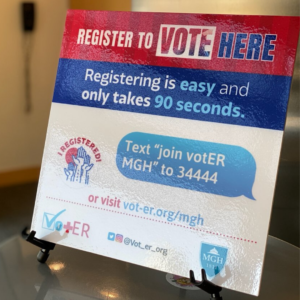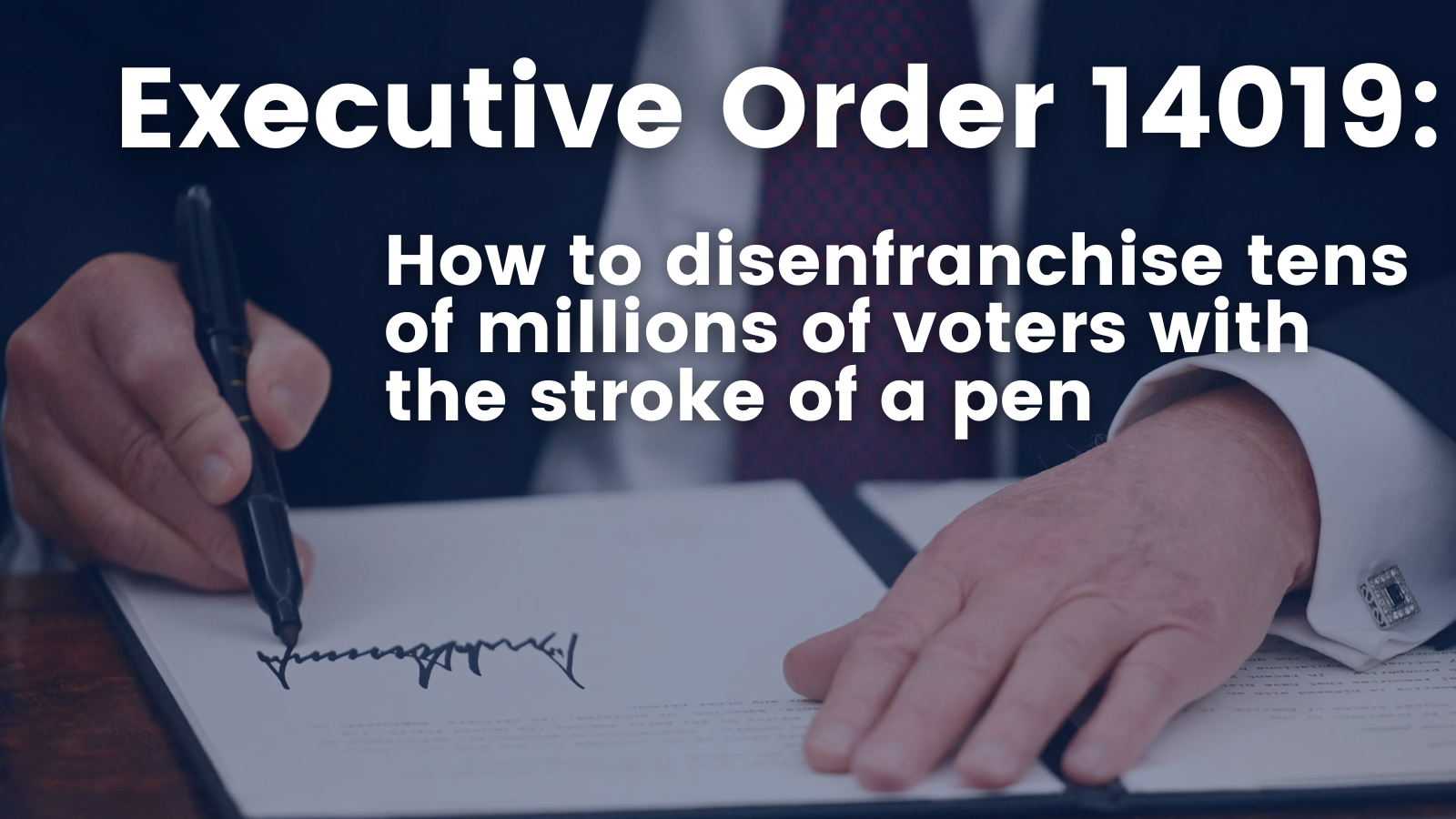Nonprofit VOTE and Independent Sector are partnering to bring you a new blog series, Mission Possible. This series will explore the different ways a variety of nonprofits are embedding voter engagement into their work. We believe that even limited voter engagement can help you enhance your mission and drive positive change for your communities and the people you serve. But don’t take our word for it, check out these examples. Each month, Mission Possible will feature one organization and the unique way they are mobilizing their communities.
Last year, Alister Martin, an emergency room physician at Massachusetts General Hospital, helped launch the VotER initiative – a program that brings voter engagement into the healthcare space in a unique way. With 24 hospitals already implementing the plan and another 50-60 gearing up, the program is taking off and reaching a population often left out of the political conversation.
We sat down with Martin to discuss his compelling reason for starting VotER and how the COVID-19 pandemic has not only impacted but amplified the need for the program.
 What made you decide to include voter registration in with your mission as a physician?
What made you decide to include voter registration in with your mission as a physician?
This is just one of the many stories that I’ve encountered, but one that made a difference: a woman in her early 20’s came in for stomach pains and she brought along her elderly dad with dementia. We get her labs back which were fine, except her urine had ketones in it, which hinted at starvation. Turns out she hadn’t eaten in two days because she lost one of her jobs and had to make a choice — pay for her dad’s meds or eat. It’s stories like this that made me think – I gotta help fix this or get out of this job. This healthcare system does not work for people and the bottom line is I can’t fix that with a surgery but she could fix that by voting.
Why did you decide to make emergency rooms the site for voter engagement? The basic fact about emergency room care is that it is not what the public thinks it is. TV shows and movies lead you to think all ER care is heart attacks, gunshots, strokes and other immediately life-threatening situations. In actuality, 37% of ER patients don’t need to be there. We typically see more low acuity complaints – patients come for medication refills, rashes, etc. But these people are coming in because they didn’t have anywhere else to go and we’re always open. Typically, the groups that come in are young, poor and people of color, the same groups of people who are underrepresented in the electorate.
What were the obstacles to getting this started and how did you overcome them?
This had never been done before so I expected some push back, but I have a great team and when I presented the overlap in demographics to the chair of our department and CEO here, there were three challenges they offered that I had to solve: First, it has to be non-coercive. Patients could not think that care was dependent upon it. Two, it has to be nonpartisan and could not damage the status of the hospital. And third, it has to be non-interruptive — ER doctors, nurses and staff have a job to take care of patients and voter registration can’t get in their way.
We felt the best solution to all the problems was to make the system as passive as possible. So, we have digital kiosks set up in the ER lobbies where people can actually register to vote but mostly act as a signaling mechanism. Patients see the kiosk and often don’t use it, but their interest is piqued and then they find posters in the waiting room with similar voter registration messaging prompting them to use text messaging to get registered and that’s often where they get activated.
Another pivot point is with staff, so when patients who see the kiosk or posters ask “what’s that about?,” ER clerks are equipped with an FAQ to help. Not to mention there is some “Check to see if you’re registered” messaging in the discharge paperwork (we worked with Vote.org, TurboVote and others to craft). This is all patient-prompted to ensure nothing feels dependent on care or mandated by the hospital.
 How has the COVID-19 pandemic impacted your work?
How has the COVID-19 pandemic impacted your work?
Operationally, we had to be completely touch-less. We have the Electronic Health Record send a reminder to say “we care about your civic health” that prompts them to register to vote. From an organizing standpoint, we are starting a campaign to get physicians, residents to be VotER organizers and expanded the real estate where patients can see our messaging. To do that we’ve created a new lanyard and a new ID card for staff that is slightly larger than the standard hospital ID that says “ready to vote?” with the same text number seen on posters and stickers.
However, philosophically, there is no better argument for getting civically involved than COVID- 19. Last week, I probably saw 80 patients, 50 of them had the virus, but I couldn’t test them because we didn’t have tests to deploy for all patients who had symptoms so we had to be very strict with who could be tested. Meanwhile, the whole NJ Nets got tested before I could test one patient. ER doctors are getting sick and are in the ICU and that’s because they don’t have the equipment they need to keep safe. This isn’t about blame but the bottom line is our system is and has been broken for decades and if we want a better system, we need to have everyone part of the conversation. The part of the population most hurt are the ones least in the conversation.
This is a really tough time for everyone but I do think that there will be a time when we need a voice to say how we can change. VotER is not the solution but it is the beginning of a way to change our healthcare system. People have to get involved, get out and vote.




